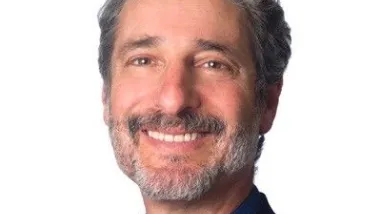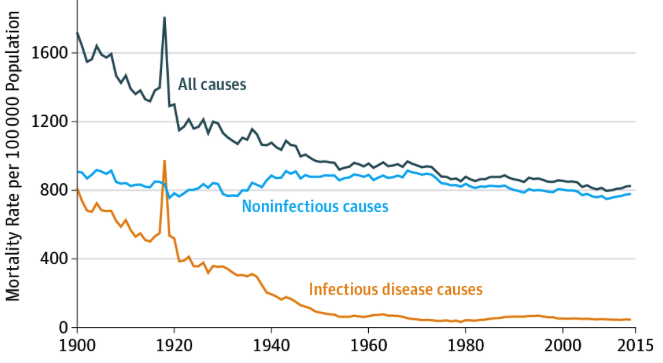Planners are professional problem solvers. Let’s see how our methods can be applied to the COVID-19 pandemic.

Defining The Problems
The COVID-19 is not a single problem; it is a set of interrelated problems. Our job is to clearly define these problems and evaluate potential solutions. For each problem we identify needs, resources, priorities and obstacles. The process is often complex; even if we identify a theoretically optimal solution, successful implementation requires stakeholder support and overcoming financial, legal, or institutional obstacles. This is, fortunately, a time when many stakeholders are willing to cooperate; our challenge is to use this opportunity to help achieve both short- and long-term goals.
It is generally best to define such problems broadly. For example, rather than only considering COVID-19, it may be better to consider all contagious diseases, so solutions can address other similar risks and lay a foundation for more comprehensive, long-term solutions. Similarly, rather than only considering risks to homeless residents, it may be better to also consider risks to residents with inadequate and unhealthy homes, so solutions can address contagious disease risks to people who live in crowded, shared, dirty and un-ventilated homes.
Putting this Pandemic into Perspective
Epidemics, including smallpox, typhus, plague, cholera, polio measles, and whooping cough, were once common. Fortunately, vaccines and modern sewage systems have greatly reduced these threats. Globalization increases the speed by which contagious diseases spread, but it also increases the speed by which we can respond to new disease outbreaks. Although COVID-19 is a significant health risk, pandemics of this scale appear to occur only once or twice a century. Overall, we face far lower infectious disease risks than our grandparents.
Between 1900 and 1950 infectious disease mortality rates declined from nearly half to less than 10% of all deaths, which significantly reduced total mortality rates. Note the large spike from the 1918 Spanish Flu and small increases 1980-1995 due to AIDS and recent tuberculosis outbreaks.
We can also compare this COVID-19 with other health risks. In a typical year, 2.8 million people die in the U.S.; COVID-19 has been predicted to kill an additional 200,000 to 2.2 million over an 18-month period which represents a 20-40% increase in annual deaths for two years. Assuming that major pandemics occur twice a century, they average 22,000-44,000 annual deaths, a relatively modest cause of mortality, as indicated in the following box.
Number of U.S. deaths by leading causes (2017)
|
Because COVID-19 mostly kills older people, it causes smaller reductions in potential years of life lost (PYLL), an indicator which accounts for the average age when people die, and so gives greater weight to risks to younger people. The figure below compares PYLL and overall mortality rates.
Injury Death Mortality and PYLL Rates per 100,000 British Columbia Residents
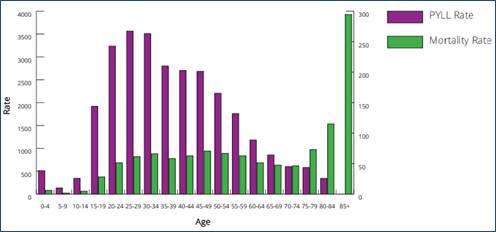
When measured by Potential Years of Life Lost, COVID-19 is a modest risk overall. For example, assuming a 30% annual infection rate (30% of the U.S. population contracts the disease in 2020) and a 1% fatality rate, during the next year or so it would be the largest single cause of death for people over 60 years, but even in this age group would only cause a minority of total deaths, and for younger age groups it would cause fewer deaths than traffic crashes, drug overdoses, homicides or suicides.
Good planning requires comprehensive analysis. Pandemics are one of many health risks to consider. Although COVID-19 deserves urgent action now, policies to reduce infectious disease risks should be implemented as part of overall community health and safety planning. Contagious disease risks do not by themselves justify major long-term lifestyle or economic changes. For example, pandemic risks do not justify more sprawled development or automobile-dependent transport planning, because compact living and public transit travel provide large health and safety benefits that more than outweigh their incremental infectious disease risks, as discussed in more detail below.
Responding to Homelessness Needs
People experiencing homelessness or inadequate housing, and the organizations that serve them, face special challenges from contagious diseases such as COVID-19. Homeless people tend to be vulnerable to such infections due to a combination daily stress, poor nutrition and chronic diseases. They are often in crowded conditions and lack resources for basic hygiene such as sinks, clean toilets, and opportunities to bath and clean clothes. In addition, many homelessness services volunteers are vulnerable to diseases due to health conditions or age, and so cannot help during infectious disease outbreaks.
Public health officials advise people exposed to or infected by contagious diseases to stay home and minimize contact with other people. Such quarantines are difficult enough for people with stable homes and reliable incomes; they are virtually impossible for people who are homeless or living in crowded or unhealthy homes. If they do become infected, they will need to stay in hospitals, using scarce beds, adding stresses and costs to overburdened public health services. Everybody benefits if we can reduce infection disease risks to homeless residents.
Many communities have programs to reduce homelessness, but a pandemic makes these efforts far more urgent. Some communities are creating quarantine housing for currently homeless people who are infected but don’t require hospitalization, using RVs or underused motels. Similarly, the Los Angeles Union Rescue Mission is installing sinks at homeless shelter entrances, and King County, Washington bought a former 85-bed motel to provide quarantine housing for homeless people. These are great, but to be successful these efforts will require coordinated food, healthcare and mental health services, with plans to transition occupants into stable long-term housing when their quarantine is completed, rather than force them back on the street. This will be an expensive and challenging project, but is badly needed and can now be justified as part of an infectious diseases reduction strategy.
Urban Versus Rural Risks
Many people assume that infectious disease risks make cities dangerous, and suburban and rural areas safer and healthier. However, this is generally untrue. Although pandemics present special risks to cities, they also present special risks to suburbs and rural areas. Planners should use comprehensive analysis of these impacts, and identify ways to minimize risks in each area.
For this analysis it is important to clearly differentiate between "density" (people per land unit, such as per acre) and "crowding" (people per unit of interior space, such as residents per room or 100 square feet). Contagious disease risks results from crowding, not density. Many rural households are crowded due to poverty, while many urban residents have plenty of space. In practice, urban, suburban and rural residents have many of the same disease exposure risks: long-distance travel, worksites, stores, restaurants, community and religious gatherings, nursing homes and healthcare facilities. There is no reason to believe, for example, that suburban and rural worksites, stores, nursing homes and healthcare facilities are less contagious than those in large cities.
Rural areas may be particularly vulnerable to COVID-19 illness and death due to a combination of demographics (rural residents tend to be older, poorer, have more chronic diseases and higher smoking rates), inadequate public health systems, and poor access to healthcare services.
Reported COVID-19 Cases (NYT, 25 March 2020)

For this analysis, it is also important to differentiate between total and per capita risks. Large population states, such as New York, California, and Florida have more virus cases, as indicated above, but many lower density states, such as Louisiana, Georgia, and Oregon have relatively high per capita death rates, as indicated below. Similarly, within urban regions, suburbs such as New Rochelle, New York and Kent, Washington have higher infection rates than central neighborhoods. Similarly, some highly urbanized countries, such as Taiwan and South Korea are particularly successful at preventing COVID-19 infections and deaths. It turns out that density is less a risk than factors such as long-distance travel (and therefore affluence), public health programs, demographics and lifestyle. As pandemic expert Professor Eva Kassens-Noor explains: "Rural populations have less means to contract it [coronavirus], but rural populations have less means to treat it."
Reported COVID-19 Deaths Per Million Residents (John Hopkins University, 25 March 2020)
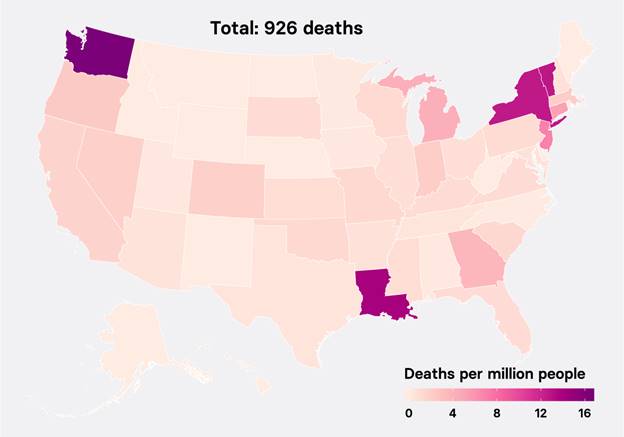
Recent analysis by the Washington Post shows that conventional flu death rates are much higher in rural areas than in large cities and their suburbs, as illustrated below. If COVID-19 follows this pattern, any lower exposure rate in rural areas is likely to offset by their higher fatality rates.
Flu Fatality Rates by Geographic Location (Washington Post, 19 March 2020)
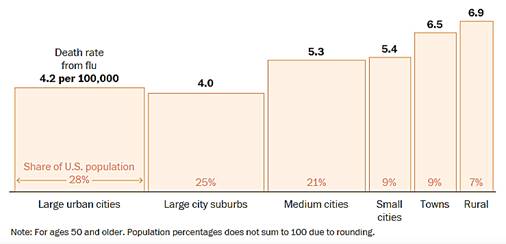
There are many good reasons for communities to favor more compact development. Compared with automobile-dependent suburb or rural areas, residents of compact housing in multi-modal neighborhoods consumer less land, own fewer motor vehicles, drive less and rely more on walking, bicycling and public transport, which provides various economic, social and environmental benefits. Specifically, residents of walkable urban neighborhoods:
- Spend 10-30% less money on transportation.
- Spend less time driving and delayed by congestion.
- Consume less energy and produce 20-60% lower pollution emissions.
- Have substantially lower traffic casualty rates.
- Are healthier and live longer.
- Have greater economic mobility (chance that children born in lower-income households become economically successful as adults).
- Are more economically productive and innovative.
- Require less land for roads and parking, which reduces stormwater management costs and heat island effects, and preserves open space (farmland and habitat).
- Reduce costs of providing roads, parking facilities and public services.
As a result, any short-term incremental infectious disease risks associated with urban living must be balanced against the long-term health, economic, social, and environmental benefits of more compact living. Rather than abandon cities, healthy community planning would reduce urban risk factors, so cities can become even safer and healthier overall.
Special urban contagious risk factors include elevators and public transport vehicles and stations, both of which can be crowded. Their risks can be reduced in the short-run with better cleaning and over the long run with design improvements. Another special risk factor is the concentration of homeless people in some cities, who tend to have high infection risks, as previously described.
Special rural risks factors include their higher risk demographics (older and poorer residents, with more chronic diseases and higher smoking rates), more physical isolation from neighbors, less developed public health services, and less accessible healthcare facilities, particularly for carless households. When COVID19 becomes established in a rural community, residents and communities will probably need more assistance than in urban areas.
Comprehensive risk analysis compares potentially higher urban infection risks (the chance that a person will contract a contagious disease) due to additional transmission factors such as elevators and public transit, with potentially higher rural mortality rates (chance that an infected person will die) due to less effective public health and less accessible healthcare services, plus the overall health, economic, social and environmental benefits provided by more compact development.
Will this pandemic lead to less urbanization and abandonment of public transit over the long run? Probably not. Perhaps the most relevant example is our experience after the September 11 attacks and subsequent public transit terrorist attacks. At the time, many people claimed that these experiences would end urbanization and public transit demand. Cities and transit agencies responded with increased security measures. Both urbanization and transit ridership soon returned to previous growth levels. Although terrorist attacks lead some people to dread (i.e., have irrational fear) cities and public transit travel, they are, in fact, generally safer and healthier overall than rural living and automobile travel, as discussed in "Terrorism, Transit and Public Safety: Evaluating the Risks" and "Evaluating Public Transport Health Benefits."
During a major pandemic it may be rational to minimize public transit travel, but over the long run, total deaths and illnesses are likely to increase if infectious disease dread leads to long-term shifts from walkable urban to automobile-dependent suburban, or from public transit to automobile travel.
This analysis indicates that urban and rural areas have somewhat different pandemic risks which require somewhat different solutions, as summarized below.
Special Pandemic Risks and Solutions
|
Urban |
Rural |
|
|
Problems
|
|
|
|
Solutions
|
|
|
Urban and rural areas each have special pandemic risks that require special solutions.
Transportation Safety
Long-distance and local travel both present pandemic risks. Long-distance travel can introduce disease and local travel can spread it around a community. Various types of shared vehicles (public transport buses and trains, transit stations, taxi and ridehailing vehicles, plus carpooling and chauffeured rides) each presents special risks. Although most concerns focus on public transport, since buses and trains tend to be crowded and have many passengers, vehicles used for taxis, ridehailing and friendly chauffeuring may present similar risk severity since they are smaller and have numerous touch services (door handles, arm rests and seats).
Public transit organizations have responded with special policies and programs to minimize contagion risks, including special cleaning, disinfecting, and social distancing in vehicles and stations, plus appropriate operator protection. Several years ago the National Academy of Sciences published A Guide for Public Transportation Pandemic Planning and Response, which provides overall guidance for this situation.
Taxi, ridehailing and other commercial services that provide rides to the public in cars and vans are also working to reduce risks. They have implemented additional vehicle cleaning and disinfecting practices, have limited paid sick leave fund for drivers who have COVID-19 symptoms, and some have suspended their carpooling services that transport multiple passengers in a vehicle. In addition, many drivers voluntarily chauffeur friends and family members. Motorists who do so are advised to clean their vehicles regularly.
Walking, bicycling and telework are probably the least contagious travel modes during a pandemic, provided that pedestrians can maintain social distance. In addition, compact, walkable neighborhoods provide more opportunities for neighborhood interactions that support community cohesion (positive relationships among neighbors). As a result, compact walkable and bikeable urban neighborhoods may be safer and more supportive than either rural and suburban areas where non-drivers are often chauffeured by family and friends, or transit-oriented areas where residents frequently travel on buses and trains.
Long-Term Travel Impacts
Currently (March 26th) this pandemic has greatly reduced automobile traffic and public transit travel, and caused even greater reductions in intercity train and air travel, which has greatly reduced traffic congestion and traffic accidents. Here are some likely long-term impacts.
- This pandemic is forcing many businesses, employees and households to rely more on telework (telecommunications that substitutes for physical meetings) and online commerce, a trend that was already underway, but likely to accelerate as people and businesses gain experience with these technologies.
- Bicycling is considered a safe and healthy travel option, which may justify more investments in bicycling facilities.
- Current demands for social distancing and reductions in vehicle traffic may allow cities to reallocate urban street space to improve walking and bicycling, at least in the short-run. Once people experience these changes, some may become permanent.
- Public transit is likely to be stigmatized. Recent trends (declining investment in public transit services, ride-hailing, suburbanization of housing and jobs, increased incomes, low fuel prices) have reduced transit ridership in most American cities, and public transit critics are likely to use contagious disease fears to justify further disinvestments. Transit advocates will need to counter with credible evidence of the overall safety and health benefits of public transit and transit-oriented development.
Affordability
Even before the COVID-19 pandemic, North America suffered from unaffordability. Although average incomes have been rising, many households were left behind while the costs of living increased. Rural areas suffer from unemployment, low wages and high poverty rates while urban areas suffer from rising housing and transportation costs.
This pandemic is causing severe unemployment and business losses which will reduce incomes. Although federal and state/provincial are providing some financial relief there are also important actions by local and regional governments to provide urgent financial relief to financially stressed households, plus more long-term strategies to increase affordable housing and transportation options. Affordability was already an important planning goal, but will become even more critical during the medium term (the next year or two) due to rising unemployment, declining incomes and economic uncertainty caused by this pandemic.
There are many ways that communities can help support affordability, including rent controls and targeted subsidies, and with policy reforms that support more affordable housing development in walkable urban neighborhoods where residents can minimize their transportation costs. Below are examples of ten local policies to support affordable housing and transport:
- Increase allowable densities and building heights, and allow compact, missing middle housing types (secondary suites, multi-plexes, townhouses and low-rise apartments) in walkable urban neighborhoods that currently only allow single-family housing. If this faces resistance, at least allow an additional story for corner lots, larger lots (1,000 square meters or more), adjacent to parks, and on busier streets, since these locations minimize negative impact on neighbours.
- Reduce development fees, approval requirements and inclusivity mandates for moderate-priced ($200,000-400,000 per unit) infill housing, since these are the projects we most need.
- Reduce or eliminate parking minimums and favor unbundling (parking rented separately from housing units), so car-free households are no longer forced to pay for expensive parking facilities they do not need.
- Allow higher densities and building heights in exchange for more affordable units. Minimum target densities can be applied in accessible locations, for example, at least three stories along minor arterials and four stories along major arterials.
- Mandate or reward energy-efficient housing, and support efficiency retrofits of existing homes. Building energy is a major financial cost and source of emissions, so improving efficiency helps achieve affordability and environmental goals.
- Improve affordable housing design. Municipal governments can support design workshops and contests to encourage better design. The Affordable Housing Design Advisor, the Missing Middle Website, and Portland’s Infill Design Project are examples of affordable housing design resources.
- Improve active transport (walking and bicycling) through more investments in sidewalks, crosswalks, bike lanes, bicycle parking, complete streets policies, traffic calming and streetscaping.
- Improve public transport services so vehicles and stations are cleaner, less crowded, better ventilated and less delayed, through better vehicle and station design, increased cleaning, dedicated bus lanes, all-door boarding, and automated fare payments system, all actions that improve passenger experience as well as reducing disease risks.
- Implement Transportation Demand Management (TDM). Local and regional governments can implement TDM strategies and require large employers to have Commute Trip Reduction programs.
- Support development of walkable urban villages along frequent public transit corridors (also called Transit Oriented Development or TOD) to create neighborhoods where residents and workers can easily access common services and activities without needing a car.
Planning for Resilience
Resilience refers to a system’s ability to accommodate variable and unexpected conditions without catastrophic failure, or "the capacity to absorb shocks gracefully." Many communities have goals to increase resilience of physical infrastructure and public services, plus resilience to economic shocks and disasters. Planners should look for ways to incorporate resilience and flexibility into their analysis.
Below are strategies for increasing community resilience:
- Infrastructure redundancy, for example, ensuring that communities have multiple access routes, diverse transport systems, multiple water and energy sources, plus emergency supplies.
- Well-defined emergency plans, so public agencies and community organizations are ready to respond.
- Robust communications systems, so authorities can clearly and reliably communicate with community members, including vulnerable and isolated residents.
- Ability to re-prioritize, for example, the ability to designate evacuation lanes and reply public transit buses for emergency services.
- Diversified economies that can maintain employment and business activity despite economic shocks, such as the closure of particular industries, fuel price spikes, or constraints on other resource supplies.
Comprehensive Solutions
A basic principle of good planning is that, as much as possible, individual, short-term decisions should support strategic, long-term community goals. While most people are focusing on current pandemic risks, smart planners will try to align solutions to this problem that help achieve other, long-term objectives, including overall public health, plus economic, social and environmental sustainability objectives.
Benefits Provided by Various Public Policies
|
Public Policy Solutions |
Contagious Diseases |
Public Health |
Sustainability |
|
Prohibit public gatherings and activities |
X |
||
|
Targeted cleaning and disinfecting practices |
X |
X |
|
|
Improve emergency response services |
X |
X |
|
|
Improve public health services |
X |
X |
|
|
Pedestrian and bicycling improvements |
X |
X |
X |
|
Encourage public transport use |
X |
X |
|
|
Targeted homelessness reduction programs |
X |
X |
X |
|
Affordable infill housing (Smart Growth) |
X |
X |
X |
|
Automobile travel reduction policies |
X |
X |
|
|
Eliminate parking minimums |
X |
X |
|
|
Efficient and alternative fuel vehicle incentives |
X |
X |
|
|
Economic assistance to low-income households |
X |
X |
X |
Public policy solutions vary in their scope of benefits. Smart planning favors short-term solutions that also help achieve long-term goals, such as pandemic-reduction policies that support overall public health and community sustainability objectives.
For example, housing, transportation and urban development polices should be evaluated based on their ability to reduce contagious diseases, improve public health, and achieve community sustainability goals, justifying more efforts to eliminate homelessness, create more walkable and bikeable communities, improve affordability and increase economic security.
Conclusions
Most people see the COVID-19 pandemic as a unique problem that requires special solutions. To planners it presents a complex set of economic, health, equity and environmental problems which should be addressed in ways that are consistent with other community goals. More comprehensive analysis helps identify truly optimal solutions.
Dedication
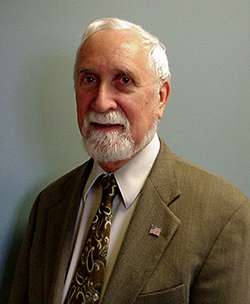 This column is dedicated to John LaPlante, a respected colleague, a leader in the Complete Streets movement, and a true gentleman. I am sorry to report that John died last Saturday of COVID-19.
This column is dedicated to John LaPlante, a respected colleague, a leader in the Complete Streets movement, and a true gentleman. I am sorry to report that John died last Saturday of COVID-19.

Planetizen Federal Action Tracker
A weekly monitor of how Trump’s orders and actions are impacting planners and planning in America.

Chicago’s Ghost Rails
Just beneath the surface of the modern city lie the remnants of its expansive early 20th-century streetcar system.

Amtrak Cutting Jobs, Funding to High-Speed Rail
The agency plans to cut 10 percent of its workforce and has confirmed it will not fund new high-speed rail projects.

The French Solution to Congested Tunnels: Make Them Car-Free
Bay Area transportation officials keep expanding car capacity. Lyon’s Croix Rousse Tunnel offers a different way.

Missouri Governor Reverses Anti-Discrimination Housing Policies
A new state law bars cities from prohibiting source-of-income discrimination against tenants using Section 8 housing vouchers.

USDOT Launches Unfunded 'SAFE ROADS' Program
The program targets “distractions” and “political messages or artwork,” and paves the way for autonomous vehicles.
Urban Design for Planners 1: Software Tools
This six-course series explores essential urban design concepts using open source software and equips planners with the tools they need to participate fully in the urban design process.
Planning for Universal Design
Learn the tools for implementing Universal Design in planning regulations.
City of Fort Worth
planning NEXT
Mpact (founded as Rail~Volution)
City of Camden Redevelopment Agency
City of Astoria
City of Portland
City of Laramie

























